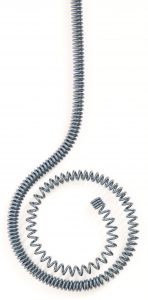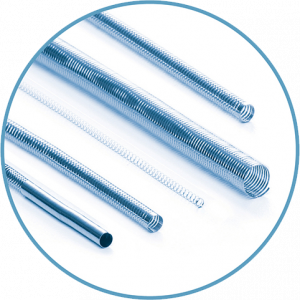There was a time when stainless steel ruled the roost in terms of medical metals. Used in everything from small tubes to feats of architecture, it made its mark as the metal of choice, able to do just about anything. However, it now has a competitor, and that competitor is a superior metal alloy called Nitinol.
In 1965 scientists were working to create a heat and corrosive resistant alloy and discovered that combining nickel and titanium did the trick. They named it “nitinol” to represent the atomic symbols for nickel and titanium (“ni” and “ti”) and to commemorate the name of their laboratory, Naval Ordnance Laboratory (NOL). It took manufacturers until the 1980s to get wind of the new development, but its superior qualities continue to outshine stainless steel.
Nitinol vs. Stainless Steel
Thermal conductivity. Nitinol can handle heat very well. Conversely, the composition of stainless steel means heat can compromise its structural integrity.
Corrosion resistance. Once a component has been created using Nitinol, it lasts for a long time. Stainless steel’s corrosion resistance is highly dependent on what type of steel you are using; there must be a high chromium level present to make it extra resistant to corrosion.
Biocompatibility. Nitinol can be safely used in the human body, making it appealing to the medical industry. Manufacturers of medical devices must be certain that the materials they use will not only last for many years but also not cause adverse reactions in patients. Stainless steel, on the other hand, can be used temporarily for very specific things, but generally is not advised for implant use in the body.
 Nitinol’s Unique Properties
Nitinol’s Unique Properties
Nitinol is an especially valuable alloy because it is extremely elastic and can change shape depending on temperature. This means that when Nitinol is cool (martensitic), it is bendable and exceptionally soft, and when it is warm (austenitic), it is rigid and super elastic. No matter the temperature, stainless steel can be difficult to bend. Nitinol’s shapeable properties are useful for medical coils because they can “remember” their previous shape when they are heated.
Nitinol is an excellent material to use when creating components for minimally invasive medical devices, such as guidewires, catheters, and stents. When medical professionals need to navigate in particularly tight areas, nitinol has both the flexibility to change shape as needed and the durability to endure high amounts of strain (8 to 9 %). Stainless steel can take less than 1% strain before plastic deformation.

Nitinol Coiling
Nitinol in the Medical Field
In recent decades, medical device manufacturers have been using nitinol more and more. Given Nitinol’s biocompatibility, improvements have been made to:
Stents: Doctors use stents to keep arteries open, so the material used to make them must be both strong and flexible. Nitinol is the perfect alloy to use because it has both those properties; additionally, it is also kink-resistant. Stainless steel would potentially make this unsafe and can be damaged. Indeed, stents are perhaps the most obvious example of why the superelasticity of nitinol can be so beneficial. When stents are inserted into the body, they can be compressed down to a minuscule size to be used in minimally invasive procedures. When the stents reach their destination, however, they expand to fill the necessary space and brace the inside arterial wall, this just could not be done with stainless steel.
Dentistry: Dentists and especially orthodontists need wires and brackets that hold braces together and perform the function of moving teeth. Nitinol’s shape memory is particularly useful with archwire applications. Stainless steel would be difficult to use in these situations.
Colorectal surgery: Gastroenterologists use this material to reconnect intestines after they remove a suspected malignancy. Given its difficulty to bend, stainless steel would be ineffective and dangerous in this use.
Orthopedic implants: When surgeons are replacing patients’ joints, they need components that will help patients regain flexibility and range of motion—as well as easily adapt to an individual patient’s tissue. Nitinol is the preferred material for these components, as stainless steel is much less flexible.
It has been more than 50 years since nitinol was first discovered, and during that time, it has revolutionized numerous industries. Its extreme flexibility, resistance to damage, and ability to excel in the medical field make it an essential resource. Stainless steel is still great for many device applications, but as metals and their properties evolve, Nitinol has proven itself to be a superior choice in many situations.



